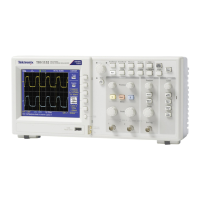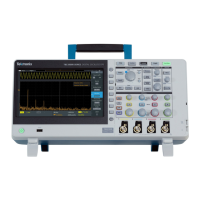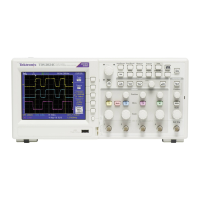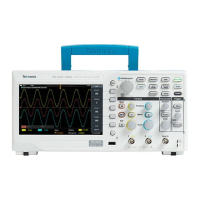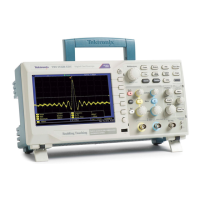Understanding Oscilloscope Functions
Slope and Level
The Slope and Le
vel controls help to define the trigger. The Slope option (Edge
trigger type only) determines whether the oscilloscope finds the trigger point on
the rising or the falling edge of a signal. The Trigger Level knob controls where
on the edge the trigger point occurs.
Rising edge Falling edge
Trigger level can be adjusted
vertically
Trigger can be rising or falling
Acquiring Signals
When you a
cquire a signal, the oscilloscope converts it into a digital form and
displays a waveform. The acquisition mode defines how the signal is digitized,
and the time base setting affects the time span and level of detail in the acquisition.
Acquisition Modes
There a
re three acquisition modes: Sample, Peak Detect, and Average.
Sample. In this acquisition mode, the oscilloscope samples the signal in evenly
spaced intervals to construct the waveform. This mode accurately represents
signals most of the time.
However, this mode does not acquire rapid variations in the signal that may occur
between samples. This can result in aliasing, a nd may cause narrow pulses to be
missed. In these cases, you should use the Peak De tect mode to acquire data.
(Se
epage22,Time Domain Aliasing.)
Peak Detect. In this acquisition mode, the oscilloscope finds the highest and
lowest values of the input signal over each sample interval and uses these values
to display the waveform. In this way, the oscilloscope can acquire and display
narrow pulses, which may have othe rwise been missed in Sample mode. Noise
w
ill appear to be higher in this mode.
Average. In this acquisition mode, the oscilloscope acquires several waveforms,
averages them, and displays the resulting waveform. You can use this mode to
reduce random noise.
Time Base
The oscilloscope digitizes waveforms by acquiring the value of an input signal
at discrete points. T he time base allows you to control how often the values are
digitized.
20 TBS1000B and TBS1000B-EDU Series Oscilloscopes User Manual
